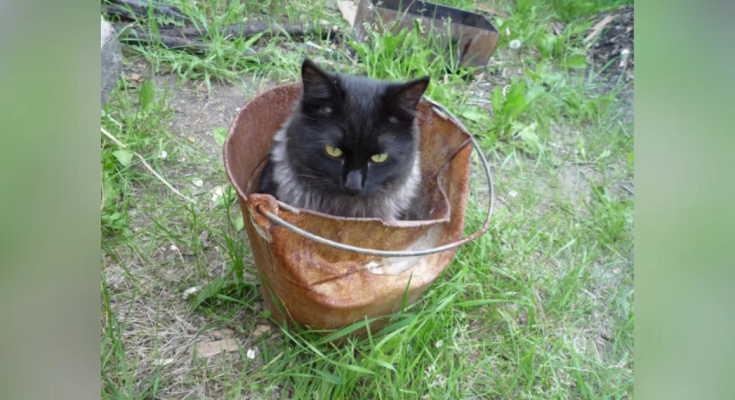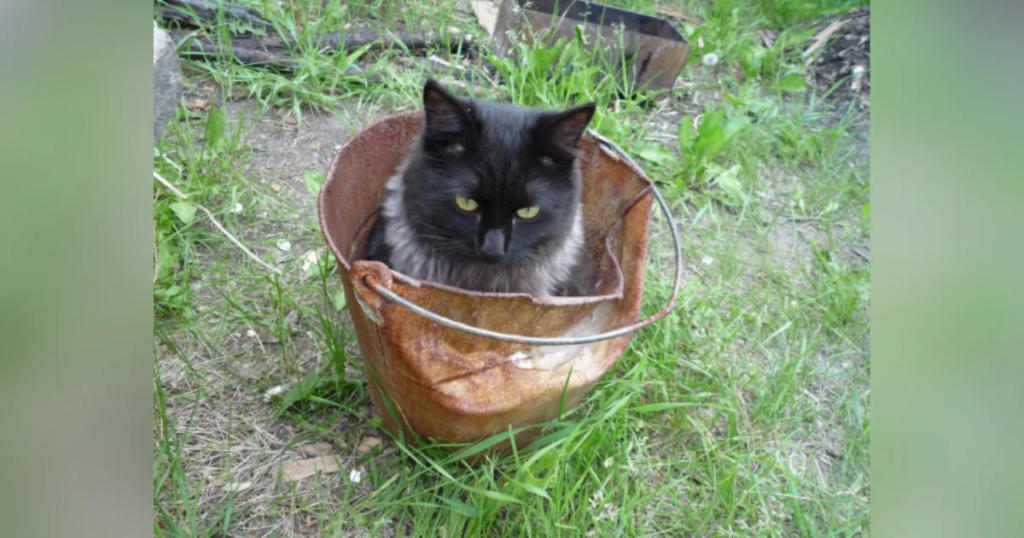
In the middle of a hot, sticky day in Houston, something odd caught the attention of people walking down a busy street. A cat was sitting in a bucket.
At first glance, it didn’t seem like anything worth worrying about.
After all, cats are known for squeezing themselves into the strangest spaces: boxes, bags, bowls. A bucket wasn’t exactly headline material.
But as time ticked on, things started to feel off. The cat didn’t move.
It just sat there, eyes wide and flicking around like it was waiting for something or maybe someone. Hours passed.
The sun blazed. People walked by, but the cat stayed put.
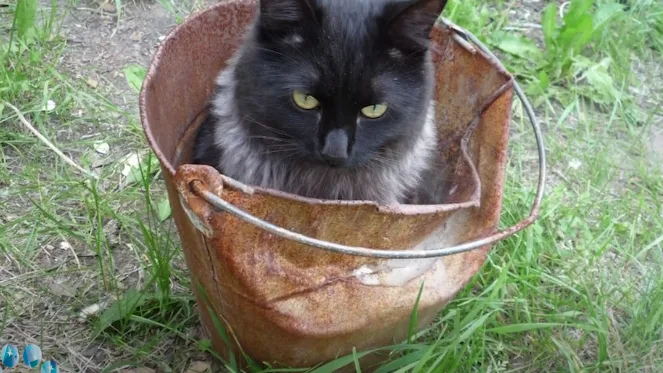
Eventually, a woman named Sarah stopped. Something about the scene didn’t sit right with her.
Why would a cat stay in a plastic bucket in the middle of the street for so long, in this heat?
Sarah decided to take a closer look. What she found changed everything.
At the bottom of the bucket, surrounding the cat like a trap, was a thick, black, sticky substance.
It looked like something between molasses and glue, but it wasn’t sweet or harmless. It was tar.
The cat’s fur was completely stuck to it, glued in place with no chance of escape.
This wasn’t just a cat being weird. This was an emergency.
Knowing this was way beyond what she or any other bystanders could fix, Sarah quickly called for help.
Soon enough, a team of animal rescue specialists arrived, fully aware they had a complicated job ahead.
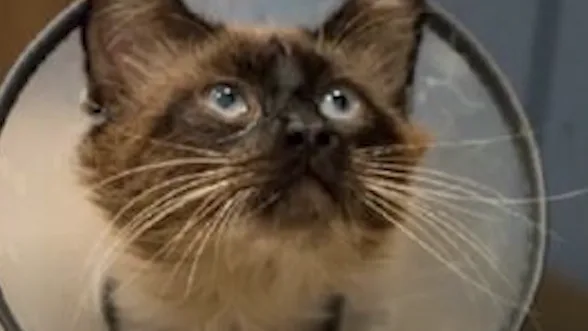
Freeing a cat from a pool of tar is no simple task. It’s not just about pulling it out.
The rescuers had to be extremely careful. Tar sticks to everything and trying to remove it without causing pain or injury is like performing delicate surgery.
So they started by cutting away the bucket, slowly and carefully, piece by piece.
The cat, despite everything, didn’t resist. It watched the team with cautious eyes, unsure but seemingly aware that these people were trying to help.
It stayed calm as the hours dragged on and the sun started to dip.
Removing the bucket was only step one. The real challenge was the tar.
The team used special solvents to try and break it down without damaging the cat’s skin or fur. It took hours of work, steady hands, and a lot of patience.
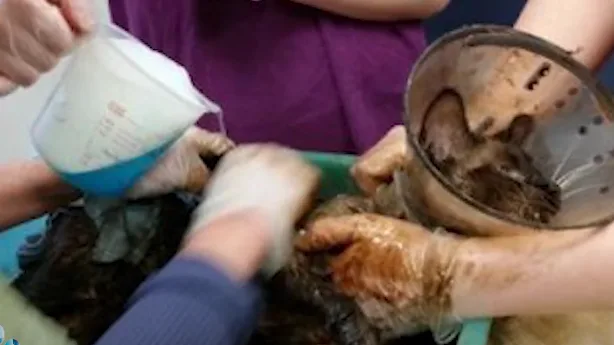
But by the end of the day, the bucket was finally gone. The cat was free.
But freedom came at a cost.
The damage the tar had done was serious. The cat’s back legs had suffered burns from both heat and chemicals.
The injuries were severe. And now that the adrenaline of the rescue had worn off, tough questions had to be asked.
Could the cat recover from this? Was it even kind to try?
Not everyone agreed. Some of the team believed the most humane thing to do was to let the cat go peacefully.
The pain, they said, would be too much. But others saw something else in the cat.
In those quiet, intense green eyes was a spark. It wasn’t giving up. And neither would they.
So they chose to fight.

What followed was months of recovery. Vets and caregivers worked tirelessly to nurse the cat back to health.
Treatments were long and painful. Surgeries. Bandages. Medication.
The kind of care most humans would struggle through. But through it all, the cat held on.
And then something incredible happened. Bit by bit, the cat began to heal.
The wounds closed. Fur started to grow back.
And though it eventually lost one of its legs due to the injuries, the cat learned to walk again, on three legs this time, but with just as much determination as ever.
No one knows how the cat ended up in that bucket, or how long it was really stuck there. But what’s clear is that it refused to give up.
It sat quietly, hoping someone would care enough to look closer. And when they finally did, it was ready to fight for a second chance.
Today, that same cat is living a new life. Scarred, yes.
But not broken. It’s a reminder that even in the unlikeliest places like a plastic bucket on a scorching street, hope can still be found.
All it takes is someone to stop and look.
